
5GAA to attend CES 2019 as Allied Association Partner
The 5G Automotive Association (5GAA) is delighted to announce its participation in CES 2019 on 8-11 January in Las Vegas as an official partner. The association will have a dedicated stand in the Allied Association Lounge.
CTO Maxime Flament along with 5GAA staff members will be present at the Lounge to meet with key mobility stakeholders and showcase 5GAA’s latest activities and progress. 5GAA will be also be represented through Member Qualcomm, Jason Ellis, during a session discussing “Wireless: DSRC/5G, Bluetooth, Wifi”. The session takes place on Tuesday 8 January from 1:00 – 2:00 PM. More information here.
CES is the world’s gathering place for all who thrive on the business of consumer technologies. Each year the show attracts more than 180,000 individuals from over 150 countries, representing the entire technology ecosystem. More than 6,500 members of the world’s media and over 65,000 senior-level executives attend.
In addition to the list of impressive high-level plenary attendees, the event gathering more than 250 sessions covers a wide range of topics including key trends and emerging technologies.
Follow us on Twitter and Linkedin to stay up-to-date with our last news about the event.
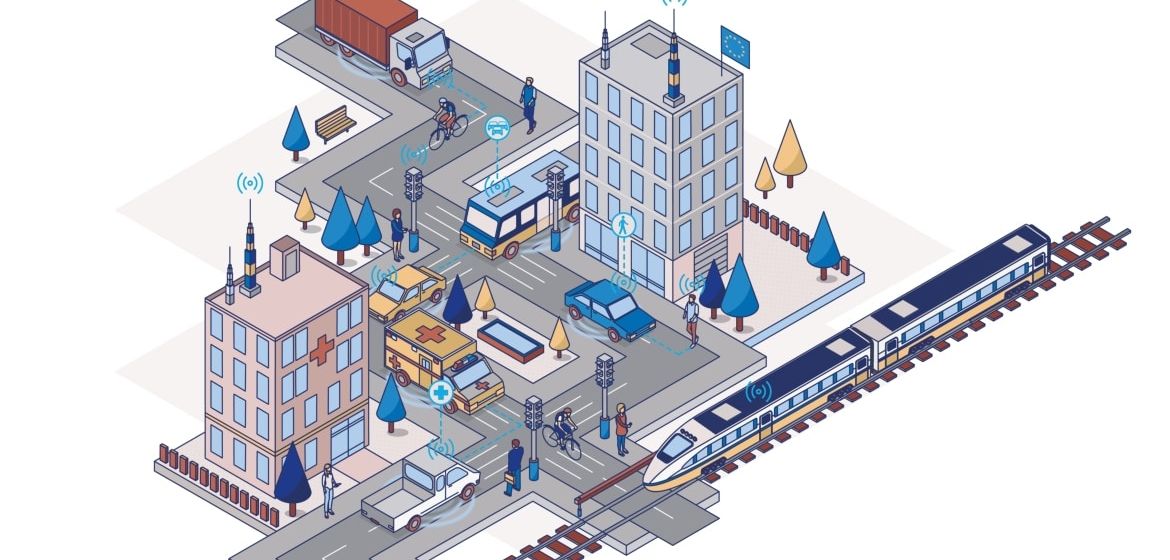
Europe’s leadership in connected and automated driving depends on technology-neutral, innovation-oriented policies
Dear Minister,
Serious concern has arisen in the telecoms and transport industries over the restrictive content of the forthcoming Delegated Act on Cooperative Intelligent Transport Systems (C-ITS). Although it is close to completion, the text still does not lay down the technology-neutral framework urged by the CEOs of 24 members of our associations (signatories included BMW, Daimler, Deutsche Telekom, Ericsson, Ford, Groupe PSA, Nokia, Telefonica and Vodafone) in their letter to President Juncker in July 2018[1].
Despite a welcome acknowledgement of cellular technologies, the draft Delegated Act only contemplates the Cellular Vehicle-to-Everything (C-V2X) technology family in the framework of a future revision of the Act in up to three years’ time, with no guarantee to date that a level playing field will be ensured with respect to compatibility and interoperability requirements.
The current draft effectively endorses Wi-Fi based communication (known as “ITS-G5”) as the baseline technology for connected cars in the EU, at the expense of a mature and standardised alternative[1]: LTE-V2X (which is the current realisation of C-V2X). We believe this contradicts the principle of technology neutrality and will prove to be a very costly missed opportunity for Europe.
Indeed, LTE-V2X is regarded internationally as the foundation stone which will pave the way towards the most advanced safety services enabled by 5G, in particular for vulnerable road users. Only C-V2X offers such a clear evolutionary roadmap starting with LTE-V2X today and evolving into 5G-V2X tomorrow, making it the only future-proof technology.
A decision exclusively favouring Wi-Fi technology today should thus be carefully considered. It would bear negative long-term consequences for Europe, since Wi-Fi offers no prospect of compatibility with 5G. A costly migration path would be required, resulting in significant sunk costs. It would stall C-V2X roll-out and investments in 5G for automotive and alongside the road network would be adversely affected.
LTE-V2X must be allowed to succeed as the first building block en route to the full realisation of 5G potential, ensuring the competitiveness of key industry verticals such as automotive as well as the telecom sector. A wrong decision at this critical juncture would put in jeopardy Europe’s leadership and investment in 5G.
Connected vehicle and roadside infrastructure technology is evolving at a very fast pace. LTE-V2X field tests and deployment projects are under way in many EU countries as well as globally with the first market introductions foreseen in 2019, within the same timeframe as the Delegated Act publication.
Leveraging all the previous work from European standardisation organisations, C-V2X offers unique benefits as a single technology platform, combining both direct short-range (not requiring network coverage or a subscription) and long-range modes.
It will, unhindered, significantly improve road safety in Europe through direct vehicle-to-vehicle, vehicle-to-infrastructure and, vehicle-to-network communication, but also provide new vehicle-to-pedestrian applications owing to its unique smartphone integration capacity, thereby reducing vulnerable road users’ casualties (43% of EU road fatalities in 2017)[1].
C-V2X also provides the fastest way to reach large-scale penetration of C-ITS: all new vehicles are expected to feature embedded cellular connectivity by 2021-2022. Many OEMs have already deployed some Day 1 C-ITS services using existing 3G/4G networks and LTE-V2X long-range mode.
We strongly believe that Europe should capitalise on these early deployments and would gain substantial economic benefits by maximising the synergies between transport and telecom network infrastructures. Today, LTE network population coverage averages 97.9% in Europe (89.9% of rural EU households) with a rapid year-on-year increase[2], whereas ITS-G5 deployment has not yet begun.
In addition, consumer 5G is rapidly moving from trials to early commercialisation. Between 2018 and 2020, 48 countries will launch 5G mobile services across North America, Europe, the Middle East and Asia-Pacific.[3]
This is not about promoting individual companies that are about to launch their respective products. It is about creating the right framework which will support Europe to make the best technology choices in the future, to achieve our common objective: making the roads safer for all.
We encourage you to support a truly technology neutral approach to C-ITS through a Delegated Act inclusive of LTE-V2X, as it holds the promise of better safety. C-V2X is close to deployment in every world region as our entire ecosystem has stepped up its efforts to be market-ready in the upcoming months. However, it is absolutely critical for our industries that the EU regulatory framework provides sufficient legal certainty in order to pursue and accelerate current roll-out plans for C-V2X.
Afke Schaart Johannes Springer Lise Fuhr
VP and Head of Europe, Director General, 5GAA Director General, ETNO
Russia and CIS, GSMA
[1] CEO Letter to President Juncker on connected car legislation
[2] Cf. Annex to this document
[3] Road Safety in the EU – Trends, statistics and main challenges
[4] Broadband Coverage in Europe 2017, European Commission
[5] GSMA intelligence

Connected car technology: Cellular V2X outperforms DSRC/ITS-G5 in comprehensive tests as mobility industry moves towards 5G
Munich, 9 November 2018: As regulators worldwide are looking into future rules for connected cars technologies, the 5G Automotive Association has conducted tests to compare the performance of 802.11p/DSRC (known in Europe as ITS-G5) and Cellular V2X PC5 radio technologies in delivering V2V (Vehicle-To-Vehicle) safety messages.
The test results show that Cellular Vehicle-to-everything (C-V2X) direct communications technology, consistently – and in many cases overwhelmingly – outperforms 802.11p/DSRC. With a natural evolution path towards the low latency and high bandwidth benefits of 5G NR, C-V2X also demonstrated superior performance in several dimensions, including the following:
- Enhanced reliability over extended communications range;
- Better non-line-of-sight performance; and
- Greater resiliency to interference (e.g. arising from other devices)
These performance advantages are particularly important in the most difficult environments such as non-line-of-sight scenarios (e.g., around a corner, highway queue forming etc.), where resident onboard sensors and radars have certain limitations.
Reliable and timely radio performance is a crucial requirement that all those with a stake in transport safety depend on to deliver critical safety applications. Such test procedures are a prerequisite to comparing the available radio technologies, and the results are very clear: C-V2X direct communications (PC5) performs better. C-V2X is commercially available and reuses the decades’ long investment into protocols and upper layer applications to improve safety, deliver traffic efficiency, and support automated driving.
The design and execution of each experiment were set up to ensure that environmental conditions, radio frequency parameters, system integration details, and physical structures were consistent when comparing 802.11p/DSRC and C-V2X direct communications.
As yet another strong signal about the global momentum behind C-V2X, 5GAA today counts 102 members (40% from Europe, 35% Asia-Pacific and 25% Americas), an increase of 60% since January 2018, quite a movement for a 2-year-old organization.
5GAA brings together the automotive and ICT industry leaders from all world regions among which carmakers, Tier-1 suppliers, mobile network operators, chipset manufacturers, test equipment vendors, telecom suppliers, and traffic signal suppliers in order to continue C-V2X field tests and to accelerate in-vehicle and infrastructure commercial deployments, foreseen beginning in 2019 globally.
Maxime Flament, CTO of the 5G Automotive Association (5GAA) said “these test results demonstrate that C-V2X direct communications, is today’s most cutting-edge technology for connected and automated driving, and the best to finally deliver upon safety and traffic efficiency. Hence why C-V2X ecosystem is growing so rapidly – the 5G Automotive Association has now more than 100 members who all believe in C-V2X as the future of mobility.”
Read the full report here
See the full webinar here
Notes to Editors:
The V2V radio performance tests were conducted by 5GAA members over a period spanning six months from March through September 2018.
Vehicle-to-Everything (V2X) communication is an essential enabler of cooperative, connected and automated mobility that can be supported today by two concurrent technologies: 802.11p (Wi-Fi based) and Cellular V2X (C-V2X).
C-V2X is the family of cellular technologies designed for automotive applications, standardized by 3GPP, the global telecommunications standard development organization.
C-V2X combines on a single technology platform a direct short-range mode operating over ITS spectrum (not requiring any network coverage or subscription) and a long-range mode using traditional cellular networks operating over the mobile network operator licensed spectrum.
The above-mentioned tests were conducted using only the C-V2X direct short-range communication mode without any network involvement.
C-V2X current realization is based on LTE-V2X (3GPP Release 14, completed in March 2017), and will evolve into 5G-V2X (also called 5G New Radio or “5G NR”) to deliver additional capabilities and support new services (as Release 16, to be completed by 3GPP by end 2019).
About 5GAA
The 5G Automotive Association (5GAA) is a global cross-industry organization of companies from the automotive, technology and telecommunications industries (ICT), working together to develop end-to-end solutions for future mobility and transportation services. Created in 2016, the Association is comprised of over 100 members whose mission is to develop, test and promote communications solutions, initiate their standardization and accelerate their commercial availability and global market penetration, to address society’s connected mobility and road safety needs with applications such as automated driving, ubiquitous access to services and integration into smart city and intelligent transportation.
Media Contact:
Marketing and Communications Team
Email: marcom@5gaa.org
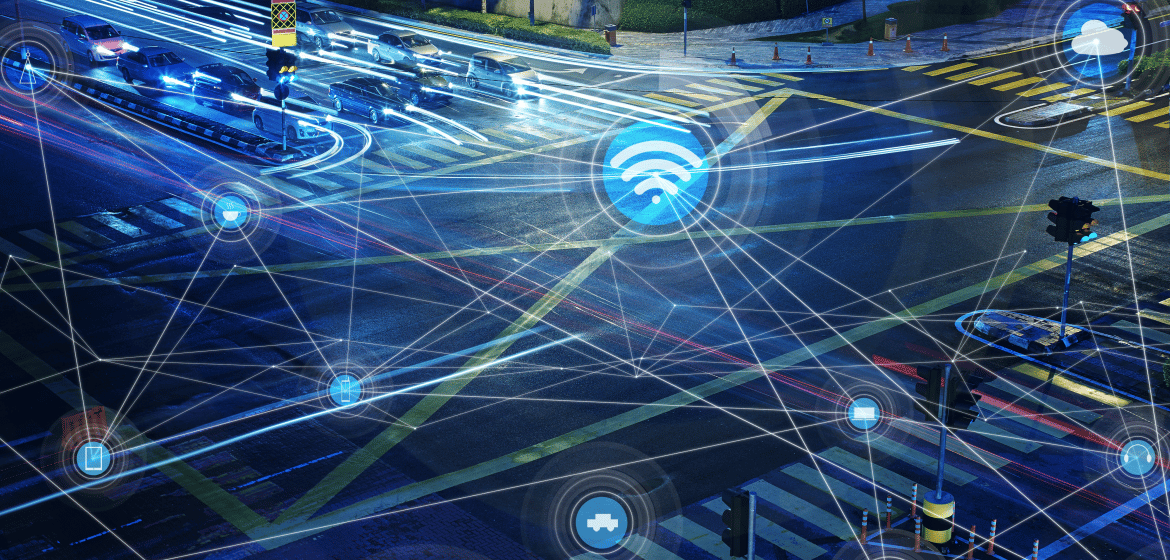
5GAA Report shows superior performance of Cellular V2X vs DSRC
The 5G Automotive Association (5GAA) announces the publication of a tests and results report comparing DSRC and Cellular V2X (C-V2X) radio technologies for their suitability to deliver broadcast V2V (Vehicle-To-Everything) safety messages.
The main conclusion of the report confirms that C-V2X significantly outperformed DSRC in various key areas.
Reliable and timely radio performance is a crucial requirement that the transportation safety stakeholder community, including vehicle manufacturers, road infrastructure owner-operators, standardization bodies and regulators depend on to deliver critical safety applications.
The V2V radio performance tests were conducted over a period spanning six months from March through September 2018. The test results reported here are intended to provide this community with an informed basis for making important decisions on the choice of the air interface to deliver standardized messages (e.g., Basic Safety Message or BSM). Therefore, great care was taken in the design, setup and execution of each experiment to ensure that environmental conditions (weather, time of day, temperature), RF parameters (antennas, power, cables), system integration details, and physical setup (track, obstructions, antenna placement) were consistent when comparing DSRC and C-V2X.

5GAA and 5GMF to Organise a Joint Workshop in Tokyo, Japan
From 22 until 25 October 2018, the global members and invited guests of the 5G Automotive Association will gather in Tokyo, Japan for its General Assembly and Working Groups meeting.
At this occasion, the 5GAA will organise in collaboration with the 5GMF a full day workshop and roundtable on 25 October at the Hilton Tokyo Odaiba.
5GMF (5G Mobile Communications Promotion Forum) is a forum where Japanese 5G stakeholders exchange ideas to bring 5G into reality and was established in 2014:
- To promote the necessary research and development for 5G;
- To facilitate standardization related to 5G;
- To cooperate and collaborate with other 5G-related organizations; and
- To disseminate information to raise awareness on 5G.
5GAA (5G Automotive Association) is a global, cross-industry organisation bringing together the automotive and telecommunications industries. Since its creation in 2016, 5GAA has rapidly grown and counts 100 key players with a global footprint representing all major industry players around the world.
For more information, contact secretariat@5gaa.org

5GAA Webinar: Comparing DSRC & C-V2X Technology
On 17 October at 5PM (CET) 5GAA sponsored an exclusive webinar on Talking Cars: Field Test Results Comparing DSRC & C-V2X Technology.
Register here to access the webinar recording
According to World Health Organization figures, more than 1.2 million casualties occur globally as a result of traffic incidents. As vehicles add more sensors to improve safety and advance the readiness of automated driving, vehicle-to-everything communications (V2X) are expected to significantly enhance road safety. As a result, global governments and industry (automotive and telecom) are carefully evaluating two different V2X technologies: IEEE 802.11p-based radio DSRC/ITS-G5 and 3GPP-based C-V2X. 802.11p is an older radio technology, based on specifications dating to 1999, and has been researched over the past decade, whereas C-V2X is a newer radio technology benefiting from many advances in communications.
This 5GAA-sponsored webinar will review how each of the technologies performed in an apples-to-apples comparison, executed by Ford and Qualcomm Technologies, Inc in US lab and field testing.
This webinar agenda included:
- The reliability, communication range and latency of each V2X technology under the same test conditions
- Performance comparison in congested environments
- Resiliency of each technology to adverse deployment conditions, including interference
Speakers:
Steve Bell, Senior Analyst, Heavy Reading
Maxime Flament, CTO, 5GAA
Gautam Savarkar, Senior Director, Engineering, Qualcomm Technologies, Inc
Ivan Vukovic, Technical Specialist, Ford Motor Company

5GAA invited as special guest to World Internet of Things (IoT) Expo on 15-18 September 2018
The 5G Automotive Association (5GAA) was invited as a special guest at the 2018 World Internet of Things (IoT) Expo, scheduled from Sept 15-18 2018. The Expo themed on “Digitalized New Economy, IoT-driven New Times”, included a large ministerial summit, 10 high-level fora, a large exhibition, and series of 16 sponsored events.
Wuxi is one of the major Chinese city who have started V2X deployment in China. In total, more than 220 intersections and hundreds of road-side sensors are already connected to a city-wide cloud. All intersections send their signal phase and timing via the China Mobile LTE network as well as via short-range LTE-V2X PC5 connectivity. The WIoT2018 gathered ten vehicle manufacturers among them Audi, SAIC, FORD, Peugeot-Citroen, Volvo Cars, Volkswagen, Donfeng, GM, Toyota, etc. Many vehicle application were using primarily the mobile network while others were combining both cellular and short-range PC5 communication. Road-side and in-vehicle connectivity was mainly provided by chipset and radio technology vendor HUAWEI but others like Qualcomm and Datang were actively contributing to the demonstration.
5GAA CTO, Dr. Maxime Flament, gave a keynote at the high-level Intelligent Transportation & Internet of Vehicles Forum. He insisted on the importance of the C-V2X deployment in Wuxi city as a model deployment for many government even outside China. It is important that the evaluation done in Wuxi can reach out to all government in the world in order to encourage a harmonized deployment of V2X around the world. The audience showed a great interest for C-V2X technology combining both vehicle short-range and cloud connectivity.
The vehicle manufacturers and their business partners are now preparing to the next big Chinese event sponsored by SAE China and IMT-2020: A large scale interoperability testing event on 6-8 Nov 2018 in Shanghai. Interoperability test will be performed at chipset, radio and vehicle application levels.
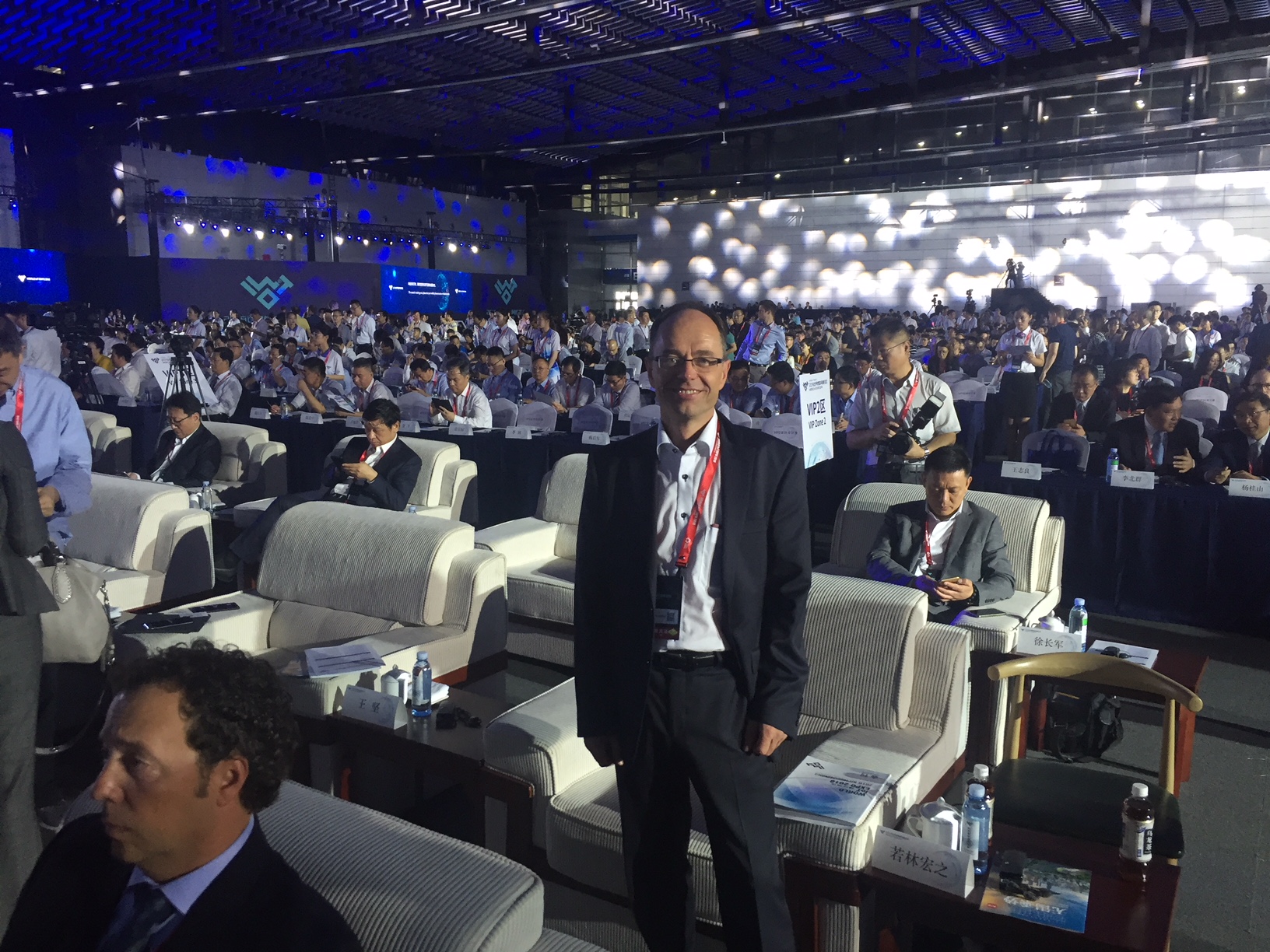
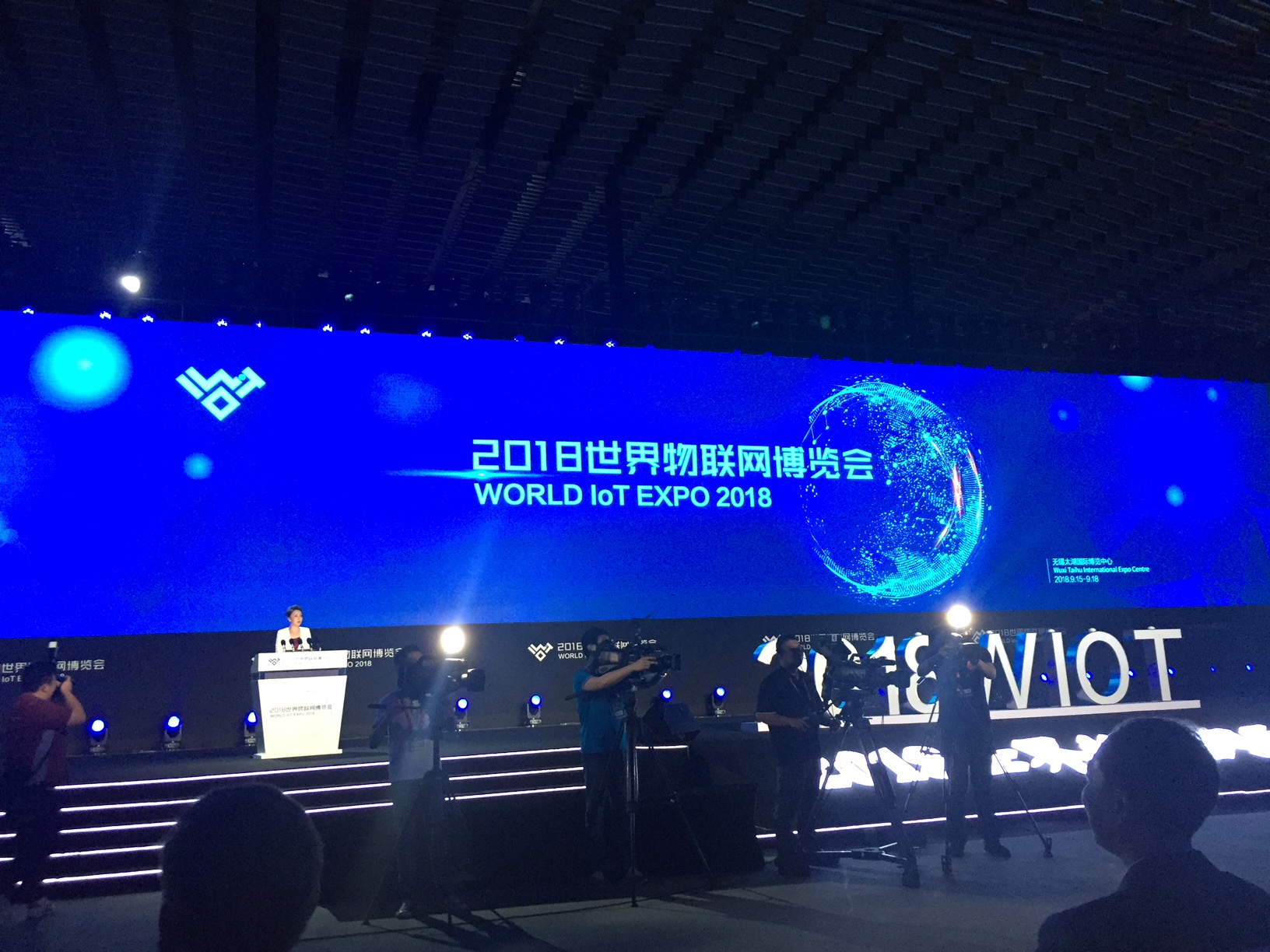
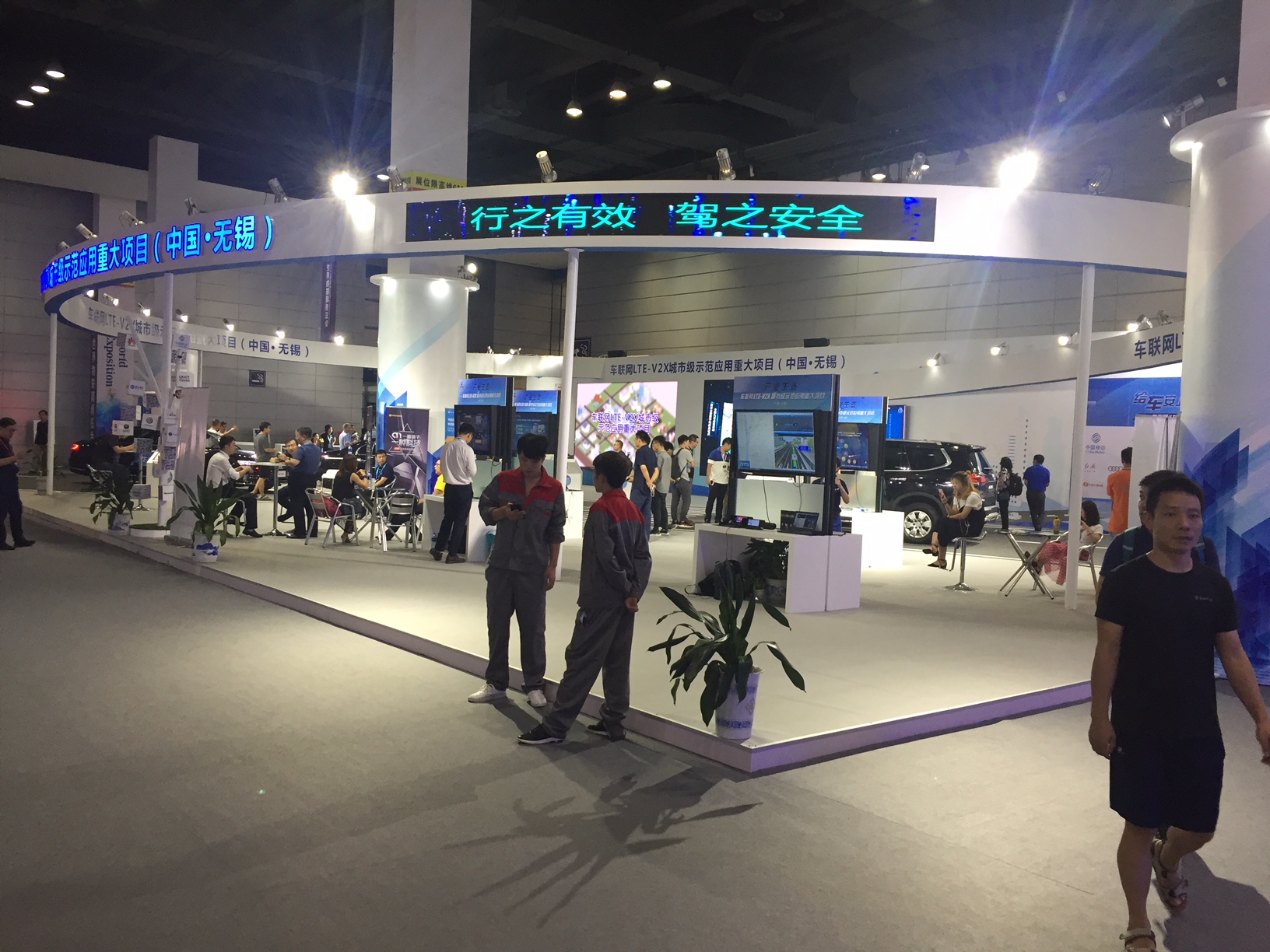
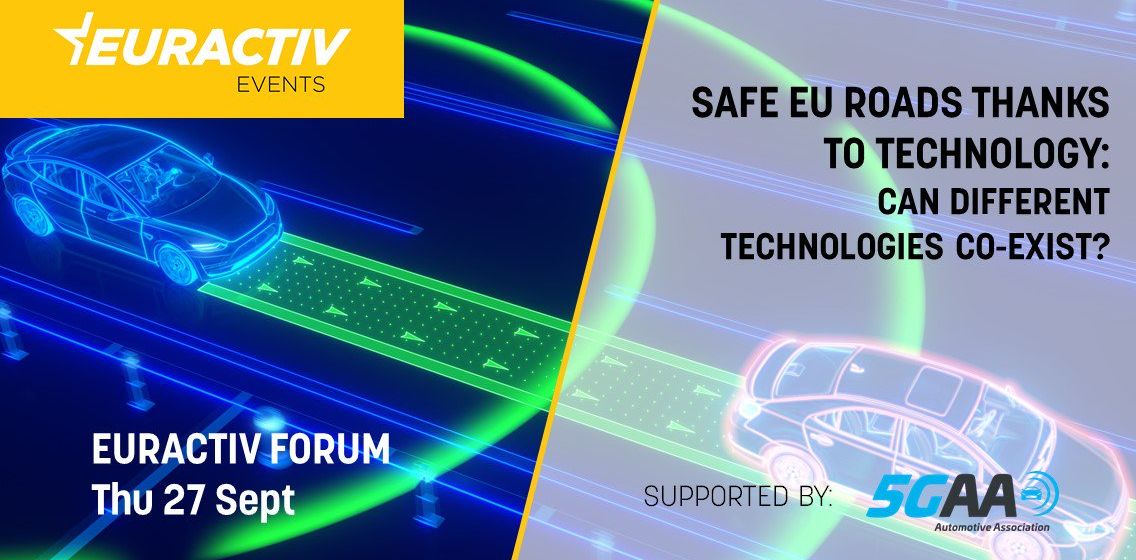
5GAA and Euractiv to introduce “Safe EU Roads Thanks to Technology” Forum – Brussels, 27 September 2018
On 27 September, the 5G Automotive Association will plunge into the debate on technologies for road safety as it takes part in the Euractiv Forum “Safe EU Roads Thanks to Technology” as an event partner.
The EU aims at being a world leader for fully automated and connected transport systems, making it safer, cheaper and more accessible. In order to reduce the number of lives lost on EU roads, the EU Commission is currently conveying new models of vehicles equipped with advanced safety features. This initiative contributes to the EU’s long-term goal of moving close to zero fatalities and serious injuries by 2050.
As the Cellular-Vehicle-To Everything (C-V2X) technology and its evolution to 5G will enable life-saving communications, the forum will be a source of debate further reinforcing the discussion on the subject. The focus will encompass the cost of deploying the C-V2X technology, the path to 5G, the challenges associated with new technologies as well as the regulations ensuing from its development.
As a major association representing more than 100 companies from the automotive and telecommunications industries, 5GAA is proud to foster the debate among relevant stakeholders, driving towards building an enhanced 5G-driven regulated ecosystem.
Join us on Thursday 27 September from 17:00 to 20:00 at the Euractiv Network Office in Brussels and attend 5GAA’s CTO Maxime Flament Speech as he opens the Forum.
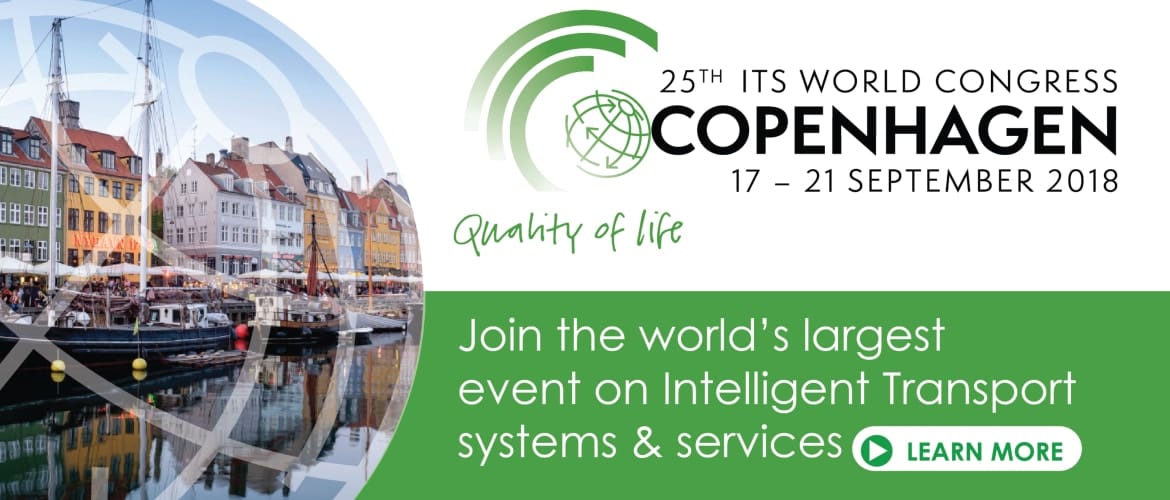
5GAA Participates in ITS World Congress Copenhagen | 17-21 September 2018
The 5G Automotive Association (5GAA) and its members took an active part in this year’s ITS World Congress, from 17-21 September in Copenhagen Denmark. More than 4000 participants including business managers, researchers, developers, and international decision-makers join the Congress.
For its first official participation, 5GAA was involved in several activities including :
- 17 Sept – LMT Workshop titled “Connected Europe – Green Transportation in 5G era” organised by LMT with the partnership of 5GAA
- 18 Sept – A dedicated 5G Special Interest Sessions (SIS 17) titled “Evolution from current Automotive connectivity and its deployments to 5G and 5G V2X” with members: Tim Leinmueller, DENSO, Roger Berg, DENSO, Johannes Springer, Deutsche Telekom AG, Takehiro Nakamura, NTT DOCOMO, Julius Mueller, AT&T, Stefano Sorrentino, Ericsson, Jovan Zagajac, Ford, Jim Misener, Qualcomm
- 18 Sept – A Special Interest Session (SIS 35) titled “Strategy of the practical implementation of V-I cooperative systems for traffic accident avoidance” with 5GAA CTO Dr. Maxime Flament.
- 17-20 Sept – 5 Special Interest Sessions (SIS 02, 36, 49, 54, 84)
- 18 Sept – Plenary 1 with Keynote Speaker Veni Shone, Huawei
- 20 Sept – Ertico Workshop titled “The role of 5G in Automation”
In addition to the list of impressive high-level speaking sessions, the association was also be represented in the exhibition area via members’ exhibition stand, such as Huawei, see picture below/
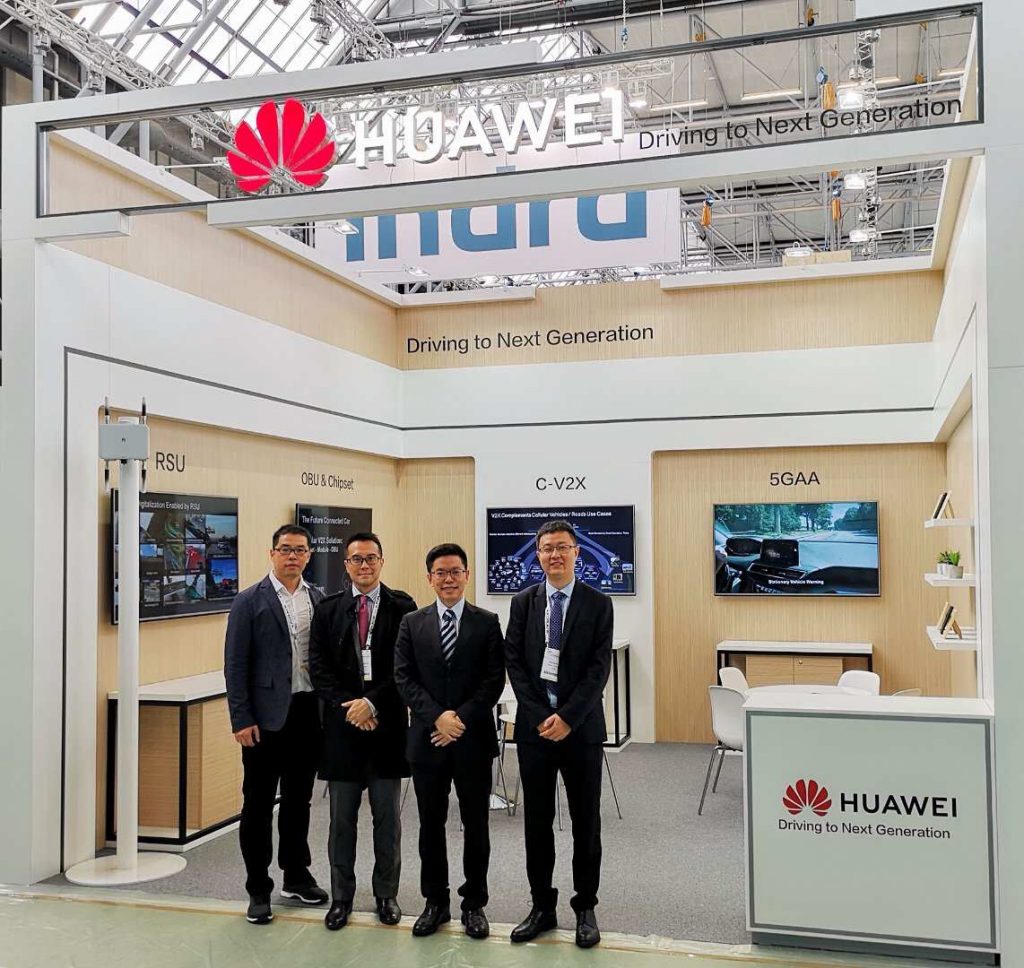

5GAA confirmed as Organisational Partner for Baltic Sea Region 5G Forum Riga, Latvia – 27 and 28 September 2018
Organized by the Electronic Communication Office of Latvia in close cooperation with the Office of the Prime Minister and the Ministry of Environmental Protection and Regional Development of the Republic of Latvia, the Nordic Council of Ministers and other international partners – the Baltic Sea Region 5G Ecosystem Forum “5G Techritory” – one of the leading 5G events worldwide will be held on 27-28 September in Riga, Latvia.
The 5G Automotive Association (5GAA), as the key industry associations in this field, have now joined this esteemed list of organisational partners, and during the event 5GAA will be represented by the newly appointed Director-General Johannes Springer, who will be sharing insights in the transition towards 5G, focusing on both the technological and policy environment, now and in the future, as Europe transitions towards the of 5G communication technology.
As Europe actively works to become a leader at the forefront of the transition to use 5G technology in the areas of mobility, energy, and health, the Baltic Sea region is perfectly positioned to be a digital frontrunner in capturing the opportunities that 5G will present society with. Capacity for harnessing momentum in the development of 5G is already being established at great speed supported by both regulators and industry in China and the US, Europe must be no different, and the Baltic Sea Region is aiming to be central to this process, with 5G Techritory an important step in this direction.
The 5G Automotive Association are delighted to be an organisational partner in an event which will host several plenary sessions and roundtable discussions involving many key policy-makers at both national and EU level including:
- Andrus Ansip, Vice-President of the European Commission, Commissioner for the EU Digital Single Market,
- Roberto Viola, Director General for Communications Networks, Content and Technology (DG CONNECT), European Commission
- Anne-Catherine Berner, Minister of Transport and Communications, Finland
- Urve Palo, Minister for Entrepreneurship and Information Technology, Estonia
In addition to the list of impressive high-level plenary attendees, there will also be several parallel discussions focusing on Smart Cities, Smart Health and of course Smart Mobility, which all attendees and speakers will be invited to actively participate.


